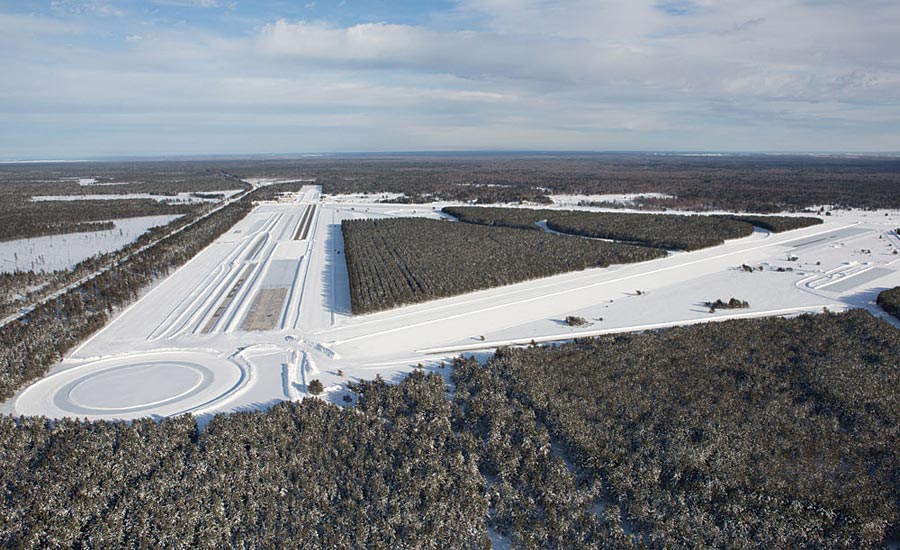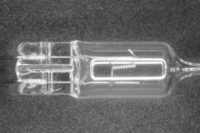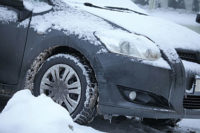When the temperature drops, so does the ability of many cars and trucks to safely and smoothly operate. To prevent this, automakers often turn to winter testing facilities and quality testing companies to verify their products’ durability and drivability on icy roads, through snow, and in temperatures well below 0 degrees Celsius.
Example I: Optimal Proving Grounds
Located near Brimley, MI, the Smithers Winter Test Center (SWTC) allows clients to reserve proving grounds for a variety of cold weather tests on whole vehicles, components, and equipment. Automotive OEMs also can test a wide range of vehicle types, from small cars to Class 8 trucks to recreational sport vehicles, on snowy, icy, or dry area surfaces.
According to Sean Connolly, general manager at SWTC, the majority of testing is performed on safety systems, which include Electronic Stability Control (ESC) and anti-lock braking systems (ABS). Other common tests conducted at SWTC include cold-start testing, component testing of powertrain performance and tires, and the testing of commercial products like snow blowers.
“On-site Smithers staff are able to conduct ride handling evaluations, tire traction, braking, and acceleration tests on passenger and truck tires, but mainly, we provide facilities for our clients to perform their own specific testing themselves,” Connolly says. “We’re also seeing increased demand for cold weather performance testing of autonomous vehicles and sensors.”
SWTC is a 24-hour operation, with a panoply of tracks maintained around the clock. “Each client has different requirements,” Connolly notes, “so we communicate with the clients daily to ensure they have the surfaces just the way they need to complete their testing goals.”
OEMs tend to prefer grounds like SWTC’s for cold testing in part because of their inherently frigid conditions.
“The natural winter climate in Michigan’s Upper Peninsula is very cold, with heavy snowfall,” Connolly explains. “Surrounded by the Great Lakes, we rely on the natural lake effect snow instead of making our own. This allows our clients to conduct winter performance testing in as close to real-world conditions as possible.” Another bonus, Connolly adds is that the Smithers’ proving grounds are about a five-hour drive from Detroit, where many clients in the automotive industry reside.
In addition, SWTC offers tire validation services for clients who design and develop tires. These clients require testing that provides comparative performance information, Connolly says, as the tires are eventually tested to demonstrate compliance to an industry standard or a customer specification.
“There are several standard FMVSS, ASTM, SAE, and ISO tire tests, as well as proprietary and customized test procedures, that are utilized throughout the product development process to test and validate a tire’s performance,” Connolly says. “Specific to winter testing, Smithers is one of just a few companies with a traction truck that meets the ATM F1085 requirements for snow and ice testing and thus can qualify tires for the three-peak mountain snowflake symbol stamped on passenger winter tires.”

The testing capabilities at SWTC include tire and powertrain performance; spin-up traction and brake testing; and autonomous vehicle component testing. Source: Smithers Winter Test Center
Given that Smithers has served the tire industry since 1925, the company’s deep expertise across a diversity of tire performance services also helps SWTC stand out.
“To develop great tires, our clients need to evaluate performance under a variety of conditions,” Connolly explains. “In the case of our winter test facility in Michigan, that means snow and ice test surfaces with a low coefficient of friction, as well as an extensive knowledge of the requirements for cold weather tire testing.”
Example II: Cold Testing in Three Phases
Cold testing for the automotive industry can vary from one facility to the next, depending on the customer’s specific requirements and the vehicle, component, or system being tested.
For instance, Intertek is a quality testing and inspection company with several cold weather tests under its Automotive Environmental Testing umbrella. Intertek staff conduct these tests either in controlled labs or on proving grounds powered by Intertek, such as the American Center for Mobility (ACM) in Ypsilanti, MI.
Rich Byczek, Intertek’s global technical director for transportation technologies, describes the three phases of cold weather durability testing employed at Intertek facilities:
1. At the material phase, we may evaluate several properties of the formed/tooled part, such as the Charpy Impact test, per ISO 179-1. This would evaluate how brittle certain materials may become under cold temperatures and under typical impact conditions, such as a knee impacting a door panel or an exterior trim piece contacting a parking lot pole. These are often performed in temperature/humidity controlled chambers, which may achieve extreme temperatures of -70C, or even lower with the optional usage of liquid nitrogen to test the actual limits of the materials.
2. At the component level, we turn our focus toward performance and durability. Typical tests would measure performance parameters and core functions at -20C, -30C, -40C. Each automaker may set different criteria.
As an example for infotainment systems with touch panels, we expect “seamless” operation down to -20C cabin temperature, and may allow certain levels of performance degradation at -30C or -40C temps, as long as they do not hinder any safety features. With autonomous driving/ADAS features integrating with such entertainment features, we find more stringent requirements than a decade ago. Again, larger temperature/humidity chambers, using mechanical refrigeration or liquid nitrogen, assist us in recreating these conditions.
Besides temperature, icing is another key area of performance and basic function. Referencing SAE J381, for example, one test regime will require the lab to recreate a coating of ice on a vehicle or component and evaluate the function of that component under the iced-over conditions. This is especially important for window de-icing functions where visibility is the key performance indicator, as well as handles and buttons that must remain operable even after a freezing rain or other icing event. Again, autonomous functions make these more critical, as cameras and sensors are no longer a convenience-only feature but must also operate under such adverse weather conditions.
3. At the vehicle and track level, it is quite difficult to recreate these same conditions, which is why we focus so heavily on component and subsystem level tests in a controlled lab environment. However, test track locations often provide some seasonal advantages.
For example, at the ACM autonomous vehicle test track, we may reserve slots for clients who wish to evaluate specific snow and ice or “white-out” visibility conditions, and evaluate the components, subsystems, and interactions in actual road and weather conditions. Often, this requires us to have staff and equipment on standby in the case of a snow or ice event, where we can arrange such tests on a closed-track environment. The real track preparation is to allow such testing prior to or during any snow removal procedures. While laboratory tests allow us to verify specific extreme conditions, these “real-world” tests are still a necessity to validate the laboratory test results. Q




